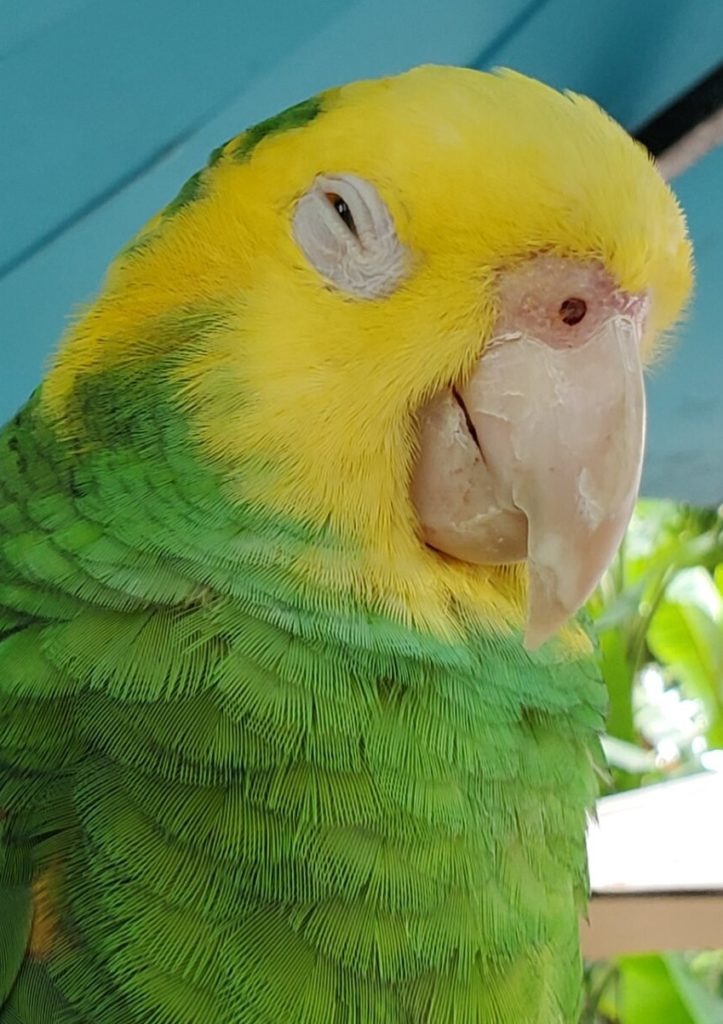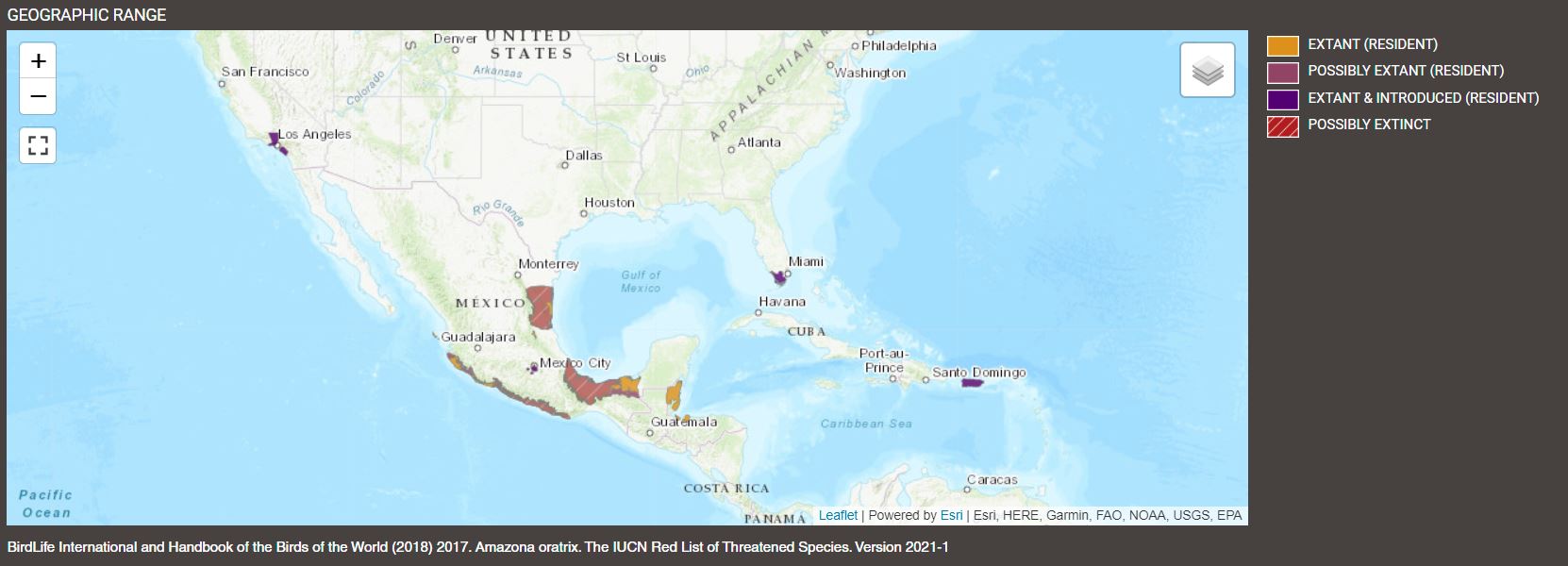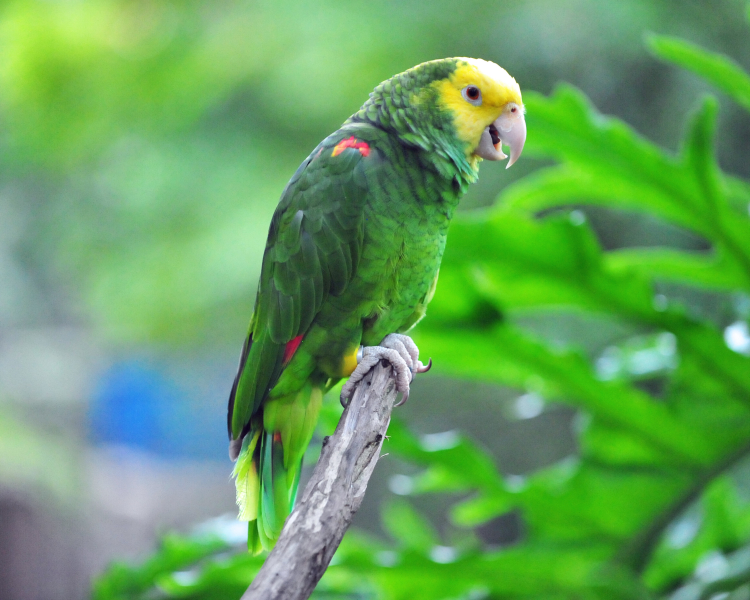
KINGDOM: Animalia
PHYLUM: Chordata
CLASS: Aves
ORDER: Psittaciformes
FAMILY: Psittacidae
GENUS: Amazona
SPECIES: Amazona oratrix
POPULATION SIZE: Under 10,000
LIFE SPAN: 80 YRS
WEIGHT: 800 G
LENGTH: 42 CM
WINGSPAN: 20 CM
Where to find the
Yellow-Headed Amazon
Mexico is where most of this species lives, with additional, small populations living in the north east of Guatemala as far as the Honduras border, as well as in Belize. They like habitats which include subtropical and tropical forests, savannah, mangrove swamps, coastal scrub and land under cultivation, where there are trees available for nesting.
How the
Yellow-Headed Amazon
lives
here is little information available regarding the social behavior of these birds. They are diurnal and are social parrots, living in flocks as large as several hundred individuals. They are beautiful, very intelligent and imaginative, and are easily tamed because they enjoy human company. These parrots are considered very good singers and talkers and are generally known as noisy birds. As with most parrot of this size, they can destroy many things unless they are redirected to chewing toys and natural, non-toxic branches, and learning tricks.
GROUP NAME: flock, company, pandemonium
How many
Yellow-Headed Amazon
are there?
Population threats
The main threats facing this species are habitat destruction and also the pet trade, with too many of these parrots being collected, many thousands having been exported illegally each year from Mexico and also some from Belize. The Yellow-headed amazon is also popular in domestic markets. It is also hunted and persecuted in Belize because it is a crop pest. Extensive deforestation has cleared large areas for agriculture, pasture, lumber and settlements, with nesting and foraging habitats being lost. Nest poaching adds to habitat loss, as nesting trees are often cut down to reach the nestlings, thus destroying critical nest sites.
Population number
The IUCN Red List reports that the estimated global Yellow-headed amazon population size in 1994 was 7,000 individuals. This is approximately equivalent to 4,700 adult birds. Currently this species is classified as Endangered (EN) and its numbers today are decreasing.






